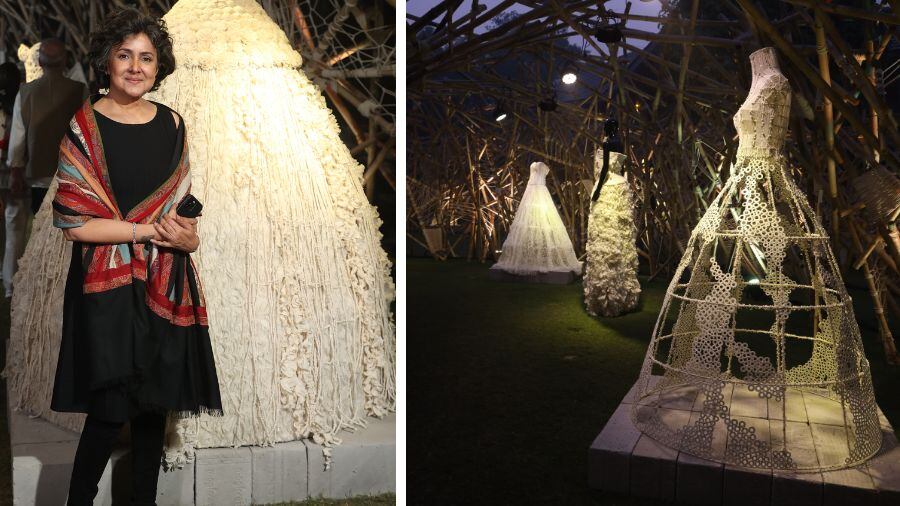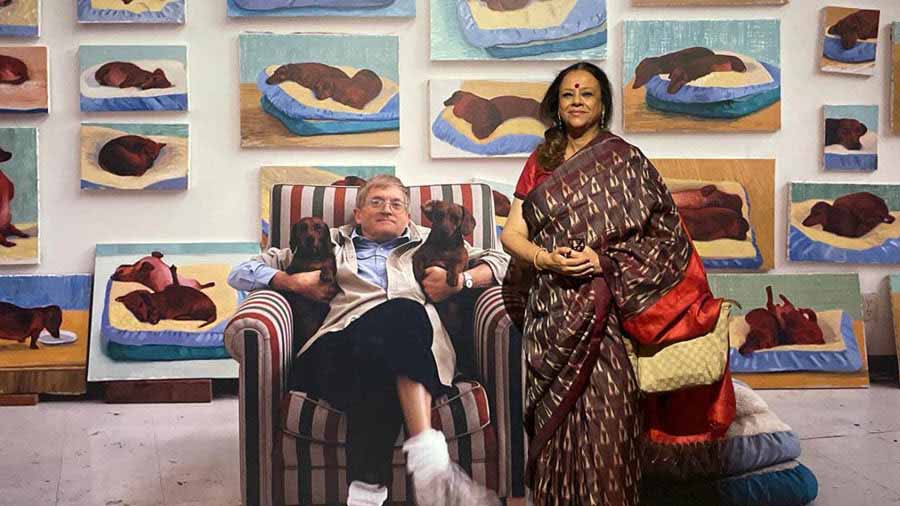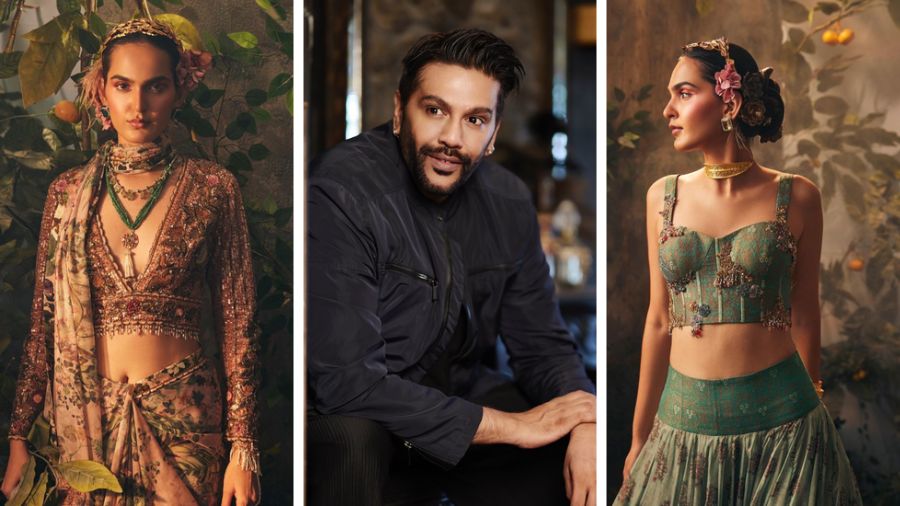No ramp, no runway and no models — designer Payal Jain celebrated 30 years in fashion with a retrospective that was like an art exhibition for fashion. An installation of curated designs, displayed under the open sky where visitors walked around watching the three decades of Jain’s fashion journey.
The retrospective show, Soul of a Woman was held in a farmhouse in Delhi’s Chhatarpur on November 2. The garden of Mehta Farmhouse was revamped into an open-air immersive art show of fashion and sustainability. Visitors walked through a bamboo structure that resembled a tunnel where 30 installations of the designer’s creation portrayed each year of her fashion career.
It was a seamless synergy of textiles, craft, and art, which demonstrated her innovative approach to fashion, showcasing her ability to merge materials like metal, wood, paper, and bamboo with textiles, craft, embroidery, and more.
Soul of a Woman was also a showcase of Jain’s fashion philosophy, which posits fashion as a form of art, and textiles as her canvas. She believes in capturing the soul of individuals through clothing, translating their unique essence into shape, form and colour.
Payal Jain, sharing her vision for the show, said, “Soul of a Woman is a retrospective of my journey of three decades in the world of fashion. Art is my muse and for me, fashion and art are deeply entwined. I see myself as an artist who endeavours to bring out the uniqueness of each distinctive personality through his or her own sartorial language. When I create couture, it’s about understanding the person who will adorn it, getting into their heart, mind and soul, and creating something special that speaks their language and compliments their unique personality.”
Curatorial expertise by art curator and author Ina Puri played a pivotal role in the event, enriching its depth and significance. Talking about the show, Puri said, “Soul of a Woman is important for me because I dared to step out of my comfort zone to step into a world that is very new. I think that here the boundaries between art and fashion were blurred and I think we have been able to pull it off. I am happy that people have accepted the fact that a fashion designer is celebrating a retrospective where a curator could actually be a part of that project working hand in hand with her team.”

Well-known art curator Ina Puri curated the show, which also featured a 368-foot sustainable tunnel of weaves made by artists from Santiniketan
The show integrated the designer’s eco-consciousness where she drew inspiration from her father’s green building legacy and the ethos of Santiniketan. She collaborated with young artists from Santiniketan to transform a small idea into a 368-foot sustainable tunnel of weaves created out of bamboo and yarn, seamlessly blending woven textile and sculptural installations.
Delhi-based Bengali mixed-media artist Debasish Mukherjee, who has worked with Jain for 30 years, also worked on the retrospective. “It’s been a long and fantastic journey,” he said, speaking about their association which began at Hauz Khas, when Jain was a fresh fashion graduate and Mukherjee was a “trained artist with no background in fashion.” They began working on the show last year. “I contributed in a very different way and that is what she wanted. We do fashion shows every year but when we thought of celebrating the three decades of the journey, Payal said, ‘Let’s do proper art!’ She did not want anything run-of-the-mill. Since this is my forte, it was lovely working on this huge set-up. We did not want any white cube space.”


